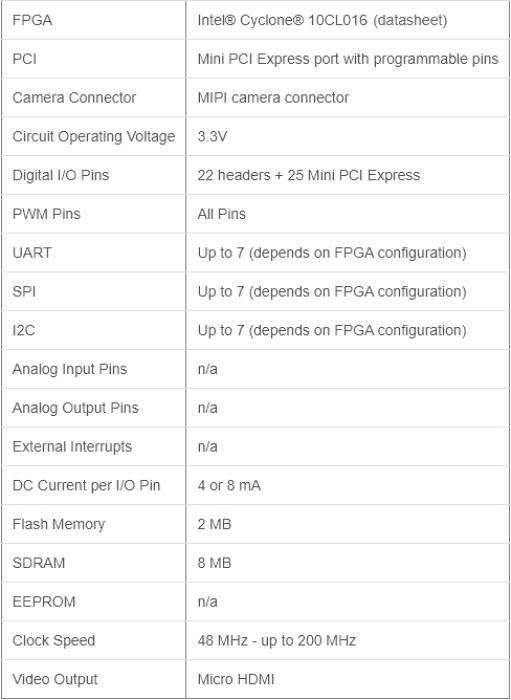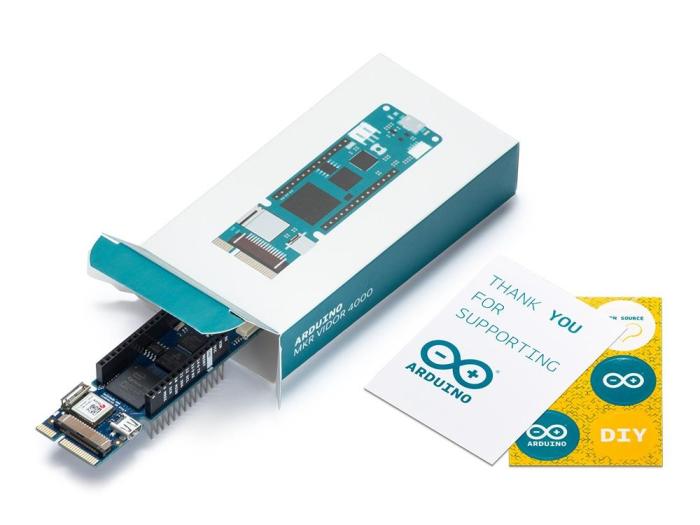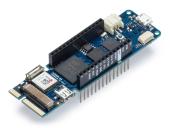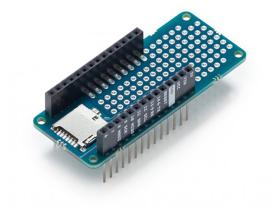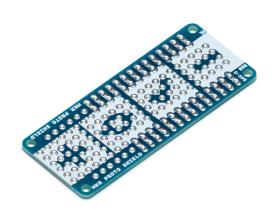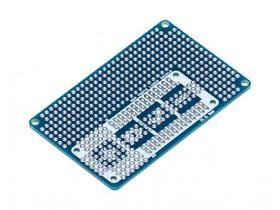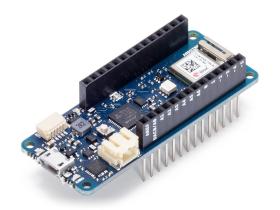The Arduino MKR Vidor 4000 brings Arduino's ease of use to the work with the most powerful reprogrammable chips that exist: FPGAs. With Vidor you can create a board where all pins are PWM signals controlling the speed of motors. You can capture sound in real time and make a sound effect pedal for your guitar. It is possible to create a real-time computer reading sensor information and sending it to a state-of-the-art monitor or capture video and overlay sensor information on the image that will then later be sent over to a screen. You can connect to the Arduino IoT Cloud and control a complex laboratory machine running a large amount of motors. You could even prototype your own processors inside the FPGA and have it to work in parallel to the other microcontroller on the board. Vidor is a device that invites for experimentation, precision, and high speed computation.
The main chip on the board is the Intel® Cyclone® 10CL016; it contains 16K logic elements, 504 KB of embedded RAM, and 56 18x18 bit HW multipliers for high-speed DSP operations. Each pin can toggle at over 150 MHz and can be configured for functions such as UARTs, (Q)SPI, high resolution/high frequency PWM, quadrature encoder, I2C, I2S, Sigma Delta DAC, etc.
The board comes with 8 MB of SRAM to support the FPGA operations on video and audio. The FPGA code is stored in a 2 MB QSPI Flash chip, of which 1 MB is allocated for user applications. It is possible to perform high-speed DSP operations for audio and video processing. Therefore, the Vidor includes a Micro HDMI connector for audio and video output, and a MIPI camera connector for video input. All of the board's pins are driven both by SAMD21 and FPGA, while respecting the MKR family format. Finally, there is a Mini PCI Express connector with up to 25 user programmable pins, that can be used for connecting your FPGA as a peripheral to a computer or to create your own PCI interfaces.
The board's microcontroller is a low power Arm® Cortex®-M0 32-bit SAMD21, like in the other boards within the Arduino MKR family. The WiFi and Bluetooth® connectivity is performed with a module from u-blox, the NINA-W10, a low power chipset operating in the 2.4GHz range. On top of those, secure communication is ensured through the Microchip® ECC508 crypto chip. Besides that, you can find a battery charger, and a directionable RGB LED on-board.
The main chip on the board is the Intel® Cyclone® 10CL016; it contains 16K logic elements, 504 KB of embedded RAM, and 56 18x18 bit HW multipliers for high-speed DSP operations. Each pin can toggle at over 150 MHz and can be configured for functions such as UARTs, (Q)SPI, high resolution/high frequency PWM, quadrature encoder, I2C, I2S, Sigma Delta DAC, etc.
The board comes with 8 MB of SRAM to support the FPGA operations on video and audio. The FPGA code is stored in a 2 MB QSPI Flash chip, of which 1 MB is allocated for user applications. It is possible to perform high-speed DSP operations for audio and video processing. Therefore, the Vidor includes a Micro HDMI connector for audio and video output, and a MIPI camera connector for video input. All of the board's pins are driven both by SAMD21 and FPGA, while respecting the MKR family format. Finally, there is a Mini PCI Express connector with up to 25 user programmable pins, that can be used for connecting your FPGA as a peripheral to a computer or to create your own PCI interfaces.
The board's microcontroller is a low power Arm® Cortex®-M0 32-bit SAMD21, like in the other boards within the Arduino MKR family. The WiFi and Bluetooth® connectivity is performed with a module from u-blox, the NINA-W10, a low power chipset operating in the 2.4GHz range. On top of those, secure communication is ensured through the Microchip® ECC508 crypto chip. Besides that, you can find a battery charger, and a directionable RGB LED on-board.


